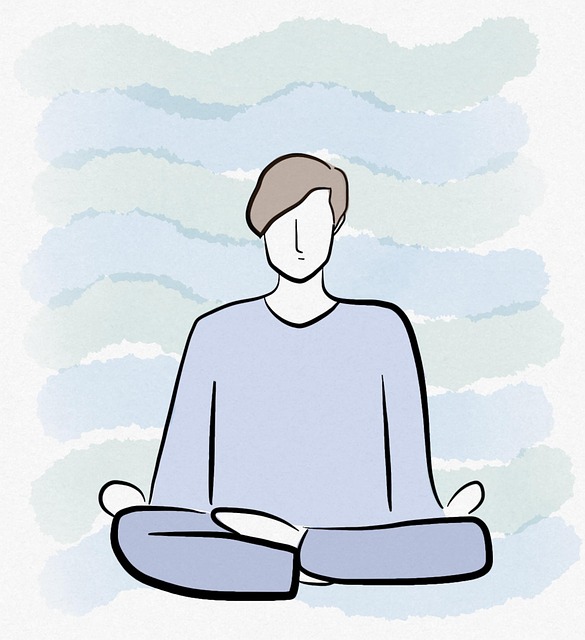Positive thinking exercises through mindfulness, affirmations, and gratitude journaling empower young adults to overcome anxiety, trauma, and major life transitions. Incorporated into tailored therapy, these techniques build emotional resilience, stress management skills, self-esteem, and purpose, promoting mental well-being. Starting with personal goals, consistently integrating practices, tracking progress, and creating a supportive environment maximises benefits, enabling young adults to navigate life's challenges gracefully.
Positive thinking exercises have emerged as a powerful tool for young adults navigating major life transitions. This article delves into the science behind these practices, highlighting their potential to foster resilience and well-being. We’ll guide you through identifying pivotal moments in a young adult’s life where such exercises can thrive, offering a step-by-step implementation strategy for tangible results. Additionally, we’ll explore methods for tracking progress and maintaining a positive mindset over the long term.
- Understanding Positive Thinking Exercises for Young Adults
- Identifying Life Transitions That Benefit from This Practice
- Implementing the Exercises: A Step-by-Step Guide
- Tracking Progress and Sustaining a Positive Mindset
Understanding Positive Thinking Exercises for Young Adults

Positive thinking exercises are designed to help young adults navigate major life transitions and challenges, such as anxiety relief and trauma support services. These practices foster emotional healing processes by encouraging a more optimistic outlook on life. Through regular engagement in activities like mindfulness meditation, affirmations, or keeping gratitude journals, individuals can learn to reframe negative thoughts and experiences into opportunities for growth and self-improvement.
Understanding how these exercises work is crucial for young adults seeking to enhance their mental well-being. Therapy for young adults often incorporates positive thinking techniques as a holistic approach to address not only immediate concerns but also long-term emotional resilience. By integrating these practices into daily routines, individuals can better cope with stress, improve self-esteem, and cultivate a sense of purpose—all vital aspects of thriving during life’s ups and downs.
Identifying Life Transitions That Benefit from This Practice

Many life transitions can be challenging for young adults, from finishing college and entering the job market to major changes in relationships or moving to a new city. These periods often come with a mix of excitement and anxiety, making them ideal candidates for positive thinking exercises. Therapy for young adults focused on cultivating optimism and resilience can be incredibly beneficial during such pivotal moments. By integrating mind over matter principles, individuals can learn to reframe negative thoughts and embrace a more optimistic outlook, which is crucial for navigating uncharted territories.
Implementing these practices early on, even before significant life transitions occur, can serve as an effective burnout prevention strategy. Public awareness campaigns that highlight the power of positive thinking can empower young adults to approach life changes with a mental framework that supports their emotional well-being. This proactive approach not only helps individuals weather difficult times but also fosters personal growth and a deeper sense of purpose.
Implementing the Exercises: A Step-by-Step Guide

Implementing positive thinking exercises is a powerful tool for young adults navigating major life transitions. Here’s a step-by-step guide to help you integrate these practices into your routine effectively.
1. Choose the Right Exercise: Start by understanding different techniques like gratitude journaling, affirmations, or mindfulness meditation. Select an exercise that resonates with you and aligns with your personal goals for enhancing mental health awareness. Public awareness campaigns on mental health often highlight such exercises as valuable tools for self-care during life’s challenges.
2. Create a Routine: Consistency is key. Allocate a specific time each day for your chosen practice. Make it a habit by keeping a regular schedule. This could be first thing in the morning or before bed, whichever works best for you. Incorporating these exercises into your daily routine can significantly improve your overall mental health and resilience during major life transitions.
3. Set Realistic Goals: Define what success looks like for you. It might involve writing down three things you’re grateful for each day or repeating positive affirmations regularly. Remember, progress is not always linear, and it’s essential to track your feelings and thoughts rather than focusing solely on measurable outcomes.
4. Create a Supportive Environment: Find a quiet, comfortable space where you can practice without distractions. Keep your area clutter-free and inviting. Some people also find playing soothing music or using scented candles enhances their experience.
5. Practice Mindfulness: Be fully present during the exercise. Allow thoughts to come and go without judgment. If your mind wanders, gently bring it back to the task at hand. This mindfulness is crucial for reaping the full benefits of positive thinking exercises.
6. Track Your Progress: Keep a journal to record your experiences. Reflect on how you feel after each session and note any changes in your outlook or emotional state. Regular reflection can help identify patterns and areas where you continue to need support, guiding further risk assessment for mental health professionals.
Tracking Progress and Sustaining a Positive Mindset

Tracking progress is a vital aspect of sustaining positive thinking exercises over time. As young adults navigate major life transitions, therapy provides a safe space to monitor their emotional growth. Through regular check-ins and self-reflection, individuals can identify patterns in their thoughts and behaviors, allowing for proactive adjustments. This process fosters emotional intelligence, enabling better management of stress and anxiety relief during challenging periods.
Maintaining a positive mindset requires consistent effort and practice. By setting achievable goals and celebrating small victories, young adults can build resilience against burnout prevention. Incorporating gratitude practices, mindfulness techniques, and engaging in activities that bring joy further strengthen their ability to stay optimistic. These strategies not only enhance overall well-being but also serve as valuable tools for navigating life’s ups and downs with grace and adaptability.
Positive thinking exercises offer a powerful tool for young adults navigating major life transitions, providing a framework to enhance mental resilience. By integrating these practices into daily routines, individuals can cultivate a more optimistic mindset, effectively managing stress and anxiety associated with significant life changes. Through structured steps outlined in this guide, and by tracking progress over time, young adults can harness the transformative potential of positive thinking as a form of therapy, fostering a lasting sense of well-being.











